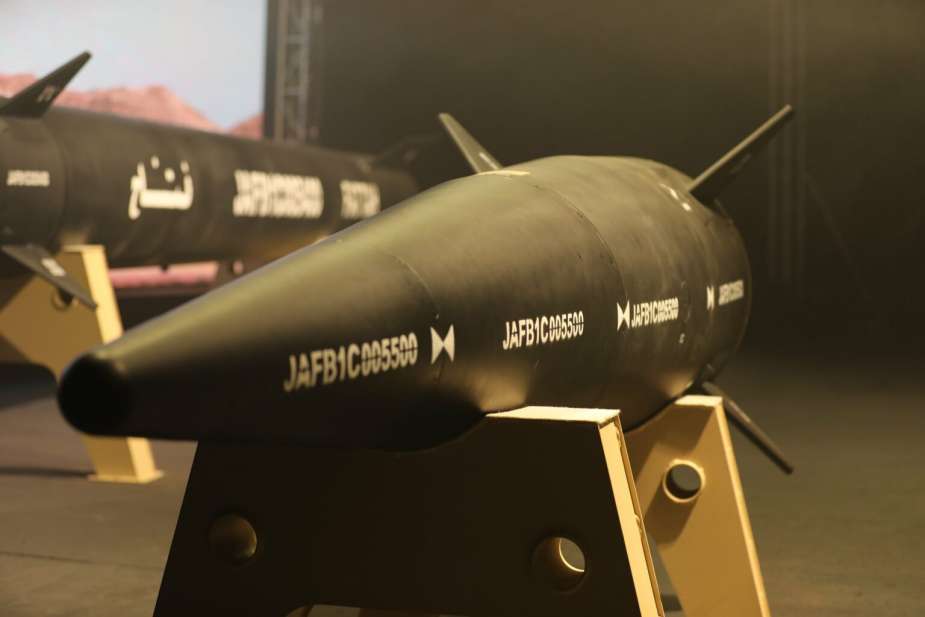According to several Russian media on March 15, 2024, the Yemeni Houthi movement, formally known as Ansar Allah, reportedly completed successful tests of a hypersonic missile, according to sources close to the group. The source revealed that the Houthis intend to commence manufacturing these missiles for potential use against targets in the Red Sea, Arabian Sea, Gulf of Aden, and even Israel.
Follow Army Recognition on Google News at this link

The new Houthi missile technology is speculated to be derived from the Iranian Fattah-2 hypersonic missiles. (Picture source: IRNA)
The group, which controls northern Yemen and is supported by Iran, has not only tested this new hypersonic missile but also upgraded its existing arsenal. This includes modifications to their missiles and drones, effectively doubling their destructive capacity, following a three-month period of tests and developments.
This move by the Houthis has raised international concerns, especially as it suggests a significant leap in their military capabilities. The ruling Shia movement's leader, Abdel Malik al-Houthi, highlighted the strategic importance of these advancements, positioning Yemen alongside countries with significant military technologies.
Moreover, the military activities and advancements reported come in the backdrop of increased regional tensions, especially noted by the recent attacks carried out by Yemeni forces, which targeted 61 naval and military assets. These actions have reportedly taken by surprise the forces of the US and the UK.
Amidst speculation, Muhammad Ali al-Houthi, a political leader within the Ansar Allah movement, has expressed openness to collaboration with Russia, China, and other Arab or Islamic countries, emphasizing the unified stance against common adversaries. This statement aligns with the widespread belief in the involvement of Iran in providing military support to the Houthis. There is also speculation, albeit not confirmed, of Russian support, which compounds the complexities given the geopolitical dynamics, especially considering the ongoing military cooperation between Russia and Iran.
The new missile technology, speculated to be derived from the Iranian Fattah-2 hypersonic missiles, marks a significant shift in the military balance, given its purported capabilities to bypass and defeat missile defense systems. These advancements come at a time when the international community is scrutinizing arms support channels to the Houthis, with Iran being the most cited source.
The Fattah missiles, characterized by their hypersonic speed and advanced maneuverability, represent a potential threat to regional and maritime security, particularly to coalition naval forces active in the Red Sea. Their introduction into the Houthi arsenal underscores the significant escalation in the group's military capacities and poses new challenges for international and regional security dynamics.
Since mid-November 2023, the Iran-backed Houthi rebels from Yemen have targeted dozens of commercial ships, and these attacks are not limited to the domestic confines of Yemen but started to extend to broader Middle Eastern contexts and international waters. In response, the United States has initiated a security effort aimed at safeguarding commercial ships and conducted strikes on Houthi targets within Yemen, raising fears of an expanded regional conflict.
The Houthis assert their targets are connected to Israeli interests in retaliation for Israel's actions in Gaza. However, the indiscriminate nature of their attacks has prompted a mass withdrawal of shipping companies from the affected area, thereby avoiding the Red Sea and the Suez Canal, potentially derailing supply chains and inflating consumer prices globally.
On the domestic front, the Houthi's intensification of attacks, including those on international shipping and Israel, seems to be influenced by internal political dynamics as well as regional alignments. Facing domestic unrest and governance challenges, the Houthis have shifted focus outward, particularly towards the situation in Gaza, to unite public sentiment and suppress dissent.
The expansion of Houthi activities, notably their advancements in drone and missile technology reportedly with Iranian support, reflects an increased involvement in the geopolitical dynamics of the region. This development is not limited to the domestic confines of Yemen but extends to broader Middle Eastern contexts and international waters, particularly as their maritime operations begin to pose threats to global shipping routes beyond the regional maritime boundaries.
















